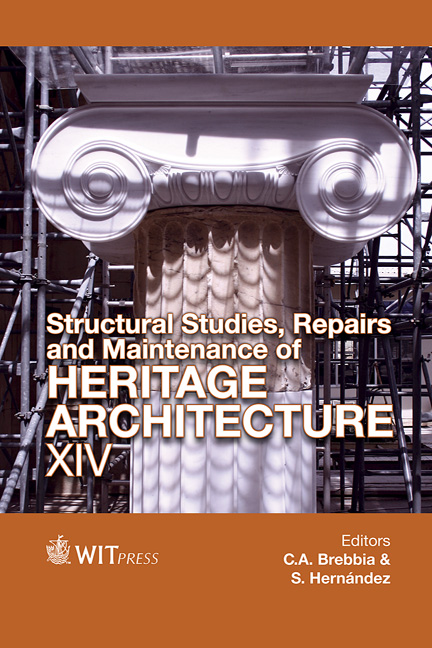Quality Management Of Interventions On Historic Buildings
Price
Free (open access)
Transaction
Volume
153
Pages
12
Page Range
313 - 324
Published
2015
Size
763 kb
Paper DOI
10.2495/STR150261
Copyright
WIT Press
Author(s)
N. Van Roy, E. Verstrynge, K. Van Balen
Abstract
The evaluation of the initial quality and long-term durability of an intervention on a historic building proves to be complex. On the one hand, technical and functional requirements can be defined which will lead to recipes and intervention methods. On the other hand, the heritage repair principles such as reversibility, compatibility and retreatability, should be respected. How are these aspects taken into account when defining an intervention in current practice? And how are they translated by the craftsmen into an actual intervention that meets their skills?
The quality management approach presented in this paper was developed specifically for the cultural heritage sector and is based on a literature study and a study of current practice within Europe. Both literature and practice demonstrate that preservation of cultural heritage can be obtained by applying a planned preventive conservation approach and through a positive collaboration of all stakeholders.
The proposed scheme will be confronted with the restoration of the fifteenth century enclosure of the Abbey of Tongerlo in order to understand its applicability in practice as a means for measuring the initial quality and long-term durability of interventions.
Keywords
quality, management approach, planned preventive conservation, repair principles, durability, performances, cultural significance




